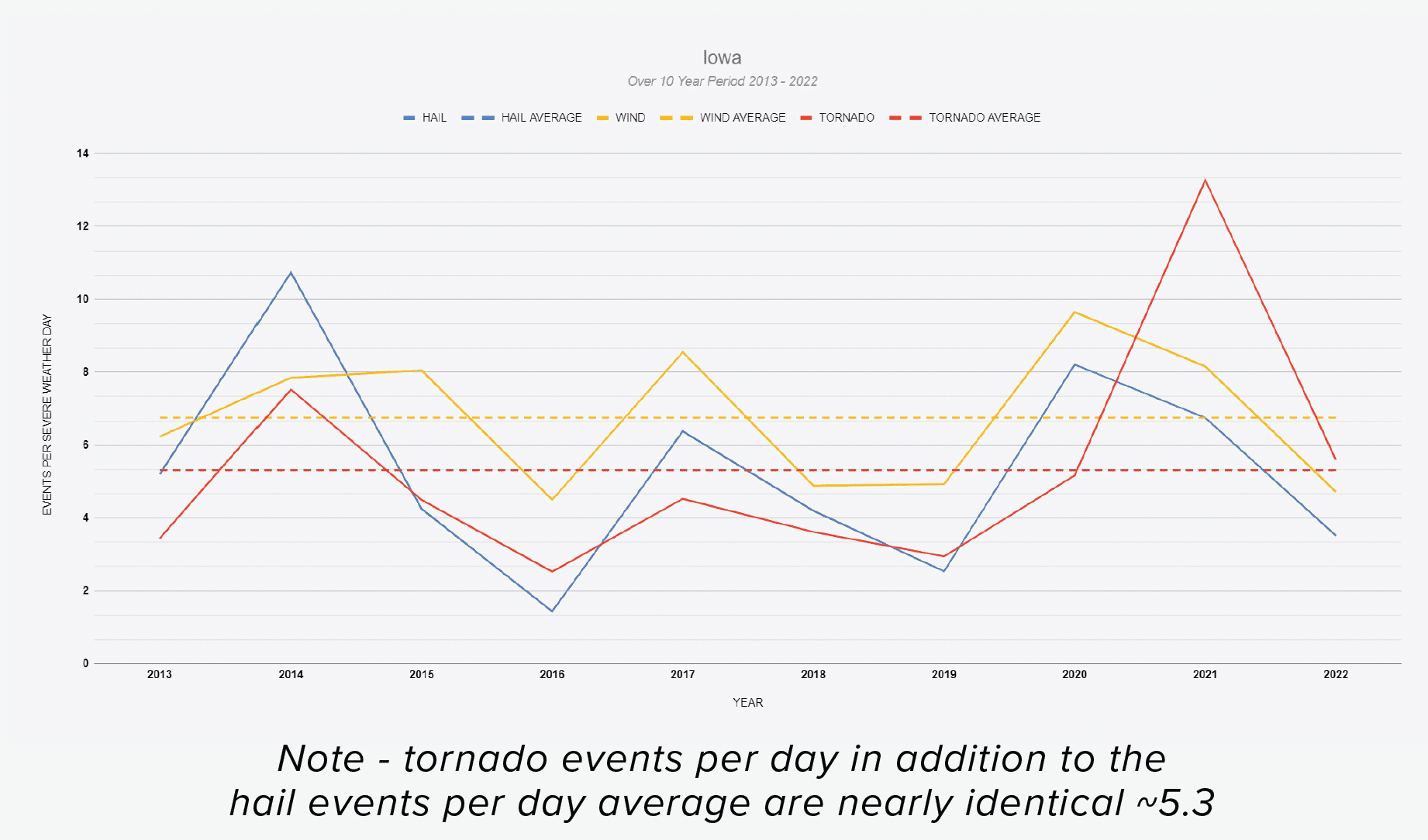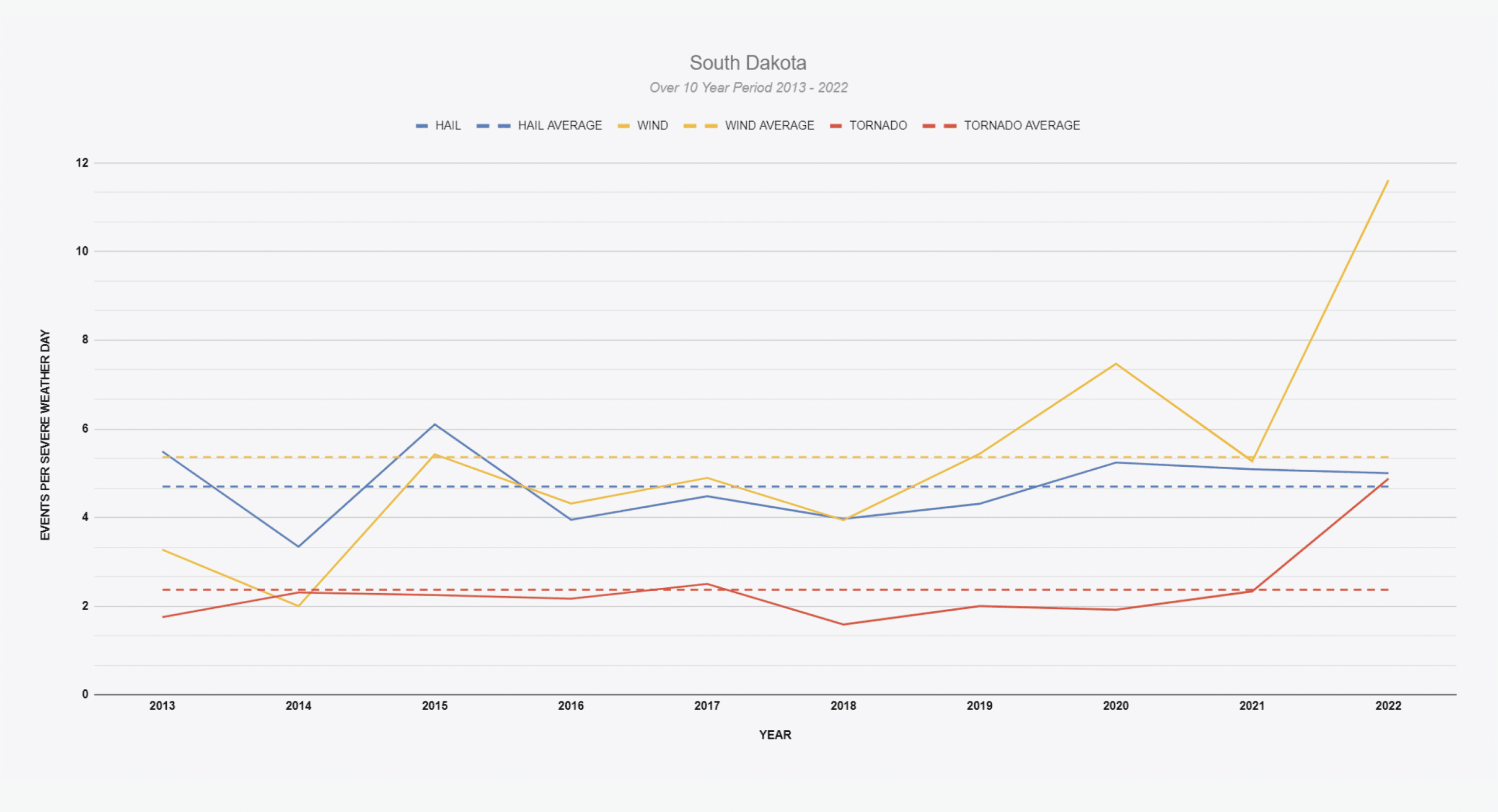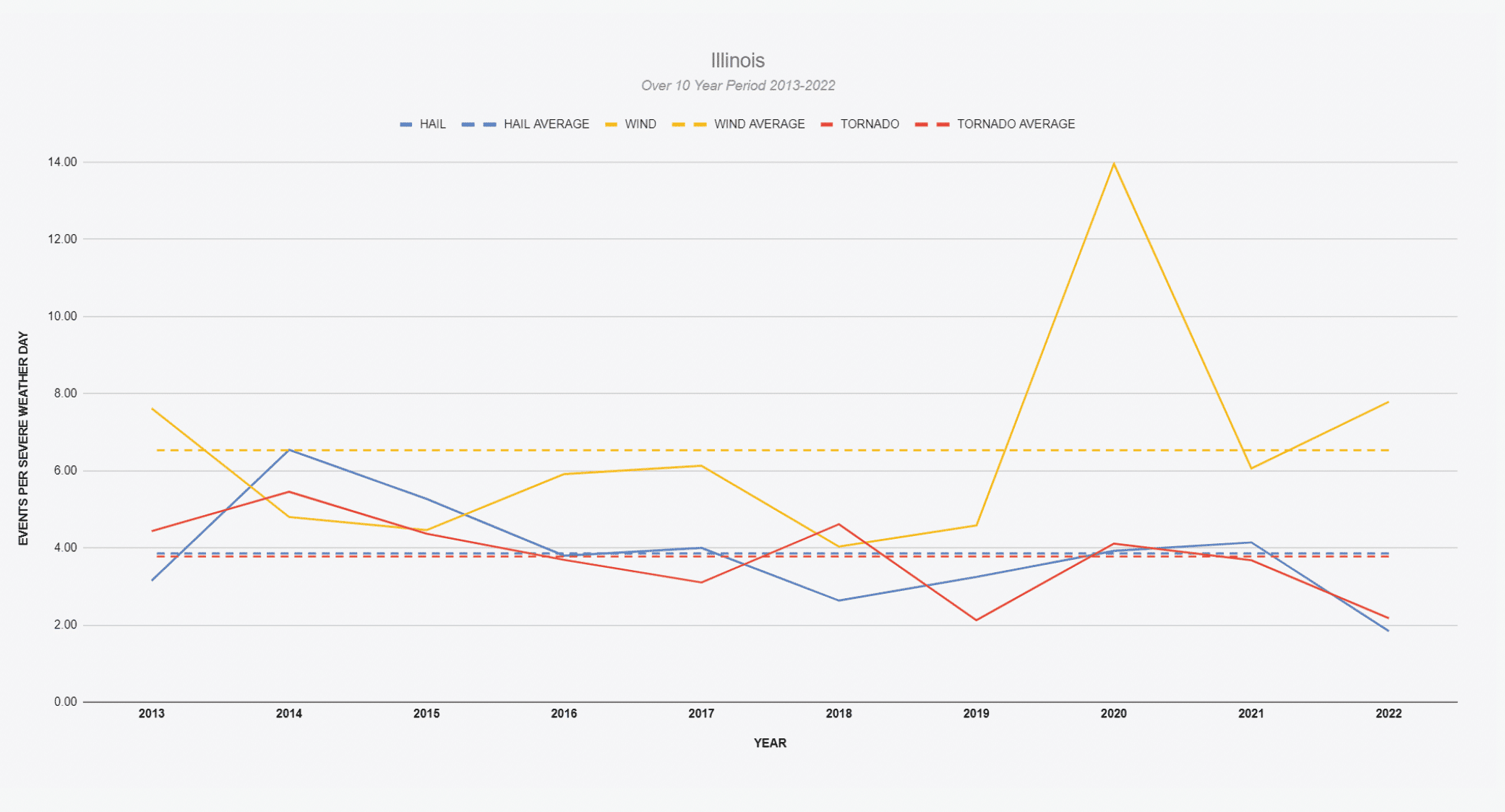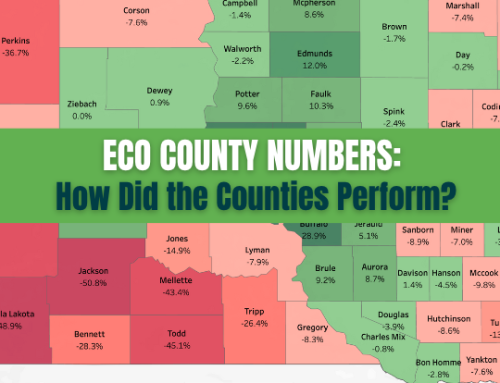Have you felt that the last few years have been “more extreme” with the type of weather that we have and the damage you have seen as a result? Is that truly the case across the High Plains and Midwest? The more frequent extreme weather brings more risk to an operation. A single weather event can create a severe crop loss scenario. Meteorologist Lucy Bergemann with PRM dives into the data to see if we are seeing trends where they don’t exist or actually experiencing more extreme weather.
Key Takeaways
- The amount of severe wind reports per severe weather day is increasing in South Dakota, Minnesota and Illinois
- Individual days or events can be targeted for contributing a high percentage of any given year’s severe weather events
- Each state has seen the highest number of severe weather days OR severe reports (individual categories of hail, wind or tornado) in the last 3 calendar years, except Missouri.
ABOUT THE DATA
The data plotted is for all tornadoes, wind gusts over 60 kts (70 mph) and hail 1.5”+ hail reports per year. We then average the data throughout each year to make it a more comparable year to year. By moving to more extremes of wind and hail classification it gives us a better picture of the most intense weather days.
NORTH DAKOTA/MISSOURI
There have been no major changes to the number or days of severe reports in North Dakota over the last 10 years. We can’t draw any trends from this set of data about the frequency/intensity of severe weather.
In a similar fashion, there have been no major changes to the number of severe reports per severe weather days for hail, wind or tornadoes in Missouri. In fact, we’ve had two of our three quietest tornado years in 2022 and 2020 in the state.
IOWA
We see a spike in the number of tornado reports per day in the year 2014 and 2021 and that can be accounted for by the two most active tornado days ever in the state – December 15, 2021 with 63 confirmed tornadoes, and the previous record on August 31, 2014 with 35 confirmed tornadoes. It follows that there is a significant uptick in the number of tornadoes per severe weather day, but if we remove the extremes of 2014 and 2021, there is no major trend. Despite individual spikes in 2014, 2017 and 2021 for severe wind increases per severe day, there is no major trend for Iowa in wind reports increasing.

SOUTH DAKOTA
In South Dakota, we have a sharp spike in the number of wind reports per severe weather day in 2022 thanks to many reports from two separate derecho events that summer. While they only contributed 2 additional days of severe weather to the calendar year, they increased the number of wind reports for 2022 to 360 – in an average year we see about 161 wind reports across the state. We are seeing a trend in SD that there is an increase in the number of wind reports year over year, but not in the number of severe wind days, suggesting wind events are more widespread over the later part of this 10 year period.

MINNESOTA
As mentioned above we had two derechos that hit the High Plains in 2022 – it caused a spike in MN too, 233 total wind reports (70+ mph), double the average of 109. Additionally, we had the most number of tornadoes in MN in 2022, totaling 83 including 10 on May 30th alone. When we look at the trends of Minnesota’s severe weather events per severe weather day, we see increases in all three categories of severe weather from 2013 to 2022. The number of tornadoes has gone up year over year in Minnesota, but the number of tornado days has stayed relatively consistent. The biggest increase is reflected in wind damage reports per severe weather day, meaning the wind damage is perhaps more widespread each time we see a severe wind storm.

ILLINOIS
The data for Illinois shows that we have seen our top 3 years for wind reports in the last 3 (2020-2022) and for 2020 we saw nearly 350 wind reports over only 25 days (fewer than average severe wind days). What this tells us is that we could be potentially seeing an increase in the number of wind reports per severe weather event or more people reported the severe weather. There is no major trend for hail or tornadoes.

SUMMARY OF THE DATA
While each state has displayed individual changes to severe weather reports in any given severe weather day by increasing or decreasing, South Dakota, Minnesota and Illinois have seen a steady increase in the number of wind reports per severe weather day over the 10 year period. This could mean that either storms are more widespread (more reports collected), winds are more intense, therefore producing more damage or residents of these states feel compelled to report more wind damage. I am not attempting to draw conclusions on why there have been increases in the number of severe wind reports per severe day, only that there has been. I’ve highlighted the top 2 wind report years in each of these three states. All have seen significant increases in the number of wind reports in 2022.

One thing of note is that each state, excluding Missouri, has seen either: The highest number of severe weather days OR highest number of severe weather reports (hail, wind, tornado) in the last three years. However, it is not consistent in category or year across all states, meaning that individual days or storms have a big impact on the number of severe weather reports. For example the tornado outbreak of December 2021 in Iowa, the Derechos of 2022 in the High Plains were just one or two days but contributed more severe weather reports due to their widespread nature.
It is important to remember it only takes one poorly placed storm system or intense wind or hail storm to impact your operation, which is why protecting and preparing for severe weather is so important!





